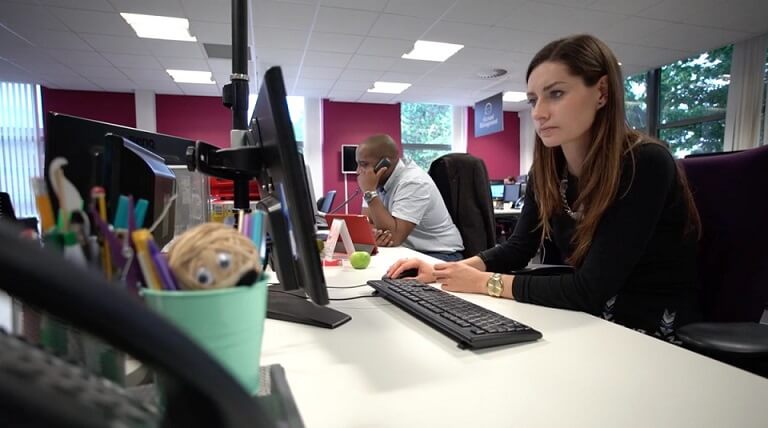
At stickee, we know a thing or two about web design… And something we always tell our clients is that on-page SEO and UX need to be two of their primary concerns.
When building your website, you’ll often look at them separately and let different people or departments handle each. But what if you made user experience part of your SEO strategy? While UX is not an official ranking factor according to Google’s rules yet, many believe that Google’s algorithms will start looking at user signals to measure the quality of your site. Our Junior Business Analyst, Ryan Drake, says: “Once this happens, user experience will impact SEO greatly, so it is vital that your UX is good.”
It’s time to start thinking of UX in terms of SEO – what can we expect search engines to look for once UX becomes a ranking factor? How do we measure the quality of UX? Our experts are here to help.
User experience as a ranking factor
Okay, so right now UX doesn’t officially count as a ranking factor. However, it still matters if you want your website to rank well. Ryan explains why: “Search engines have a limited number of variables that they can consider directly, this includes site structure, links and keywords. User experience is a second order influence on search engine ranking success. This means it provides an indirect but measurable advantage to a sites external popularity, which the engines will then see as a sign of greater quality.
“Crafting an empathetic and well thought-out path ensures the user’s experience on your site is perceived positively, encouraging organic sharing, bookmarking, inbound links, and return visits and other distributions. All these are signals that flow down to search engines and contribute to higher rankings.”
SEO practices are constantly evolving to stay on top of updates to search engine’s algorithms – which happen often, as Google and other search engines try to crack down on dodgy, spammy SEO practices.
Basically, the more advanced search engines get, the more they learn to act like real visitors and understand the way these visitors will experience a certain website, which is why on-page SEO tactics need to really start taking UX into consideration. A cracking SEO strategy alone won’t be enough – you need to involve your UX experts in the process too! (Obviously, your keywords, metadata and other tags remain a very important part of your strategy, and you shouldn’t just start ignoring them.)
How do you incorporate UX into your SEO?
stickee’s SEO master, Ryan Drake, has some tips to share: “UX is essential in attaining SERPs. If your visitors enjoy a great user experience, they will be more likely to interact, comment, and share your content on social media – which will have a very positive impact on SEO.
“But UX should also be a highly important part of your link-building strategy. If your plan is to reach to other websites or blogs and ask them to link to your content, they are going to want to ensure the website they are linking to offers a great experience to visitors. If the UX is bad, they won’t want to share it – because as the distributor, their reputation is on the line.”
Similarly, SEO should be incorporated into your UX strategy, and decisions should be made during the design process. Ryan says: “What users are searching for should be considered when the site is being designed. If your designer knows what search terms are likely to drive visits to your site, they can make decisions based on fact rather than guess. This can have a huge impact on SEO, as it’s being considered from the start, and your website will be built with SEO in mind.”
Measuring the quality of your UX
How can you be sure you’re offering an exceptional user experience? Measuring customer interaction with your website is important – and you need to use the right tools. Google Analytics is the first most obvious, and used properly it can give you some very valuable information. Creative Bloq have some good in-depth advice on the subject!
Heatmaps are another useful way to find out how users are interacting with your website – they work by showing you where people tend to click the most on a page, so you can assess whether your calls to action and links are attracting enough engagement. Conversion Optimisation (CRO) tools like Hotjar and Crazy Egg offer heatmaps among other features to help you measure user experience and engagement.
Remember the best information on your users’ satisfaction will come directly from them! Make sure to listen to what your customers are saying on social media or asking you via email, and try to collect as much feedback as you can. Learn what your users like about your website and what frustrates them about it, so you can make informed decisions when carrying out design changes.
Tips from our design experts
Let’s be clear: when it comes to website design, there isn’t a ‘one size fits all’, cookie-cutter approach. Each website is different, each client is different, and each user is different.
Our Creative Director, James Orton, has some advice for you:
“If you’re looking to improve conversion on a site that is focused on selling a product or service, a simple navigation and clear user journey are two of the most important things to put in place. An over-complicated or bloated navigation will make the user unfocused and won’t help you convert, and in terms of user journey it’s important to decide on your goals before development.
“Design your website around those clear, attainable goals, and make sure that users can convert no matter where they enter the site.”
If your SEO strategy and UX best practices work together, you should see better results – from your Google ranking to conversion rate. Need more advice on the subject? Come talk to us!



